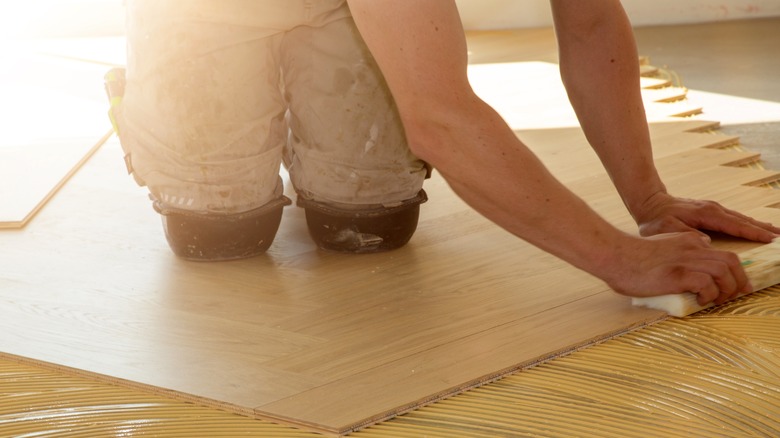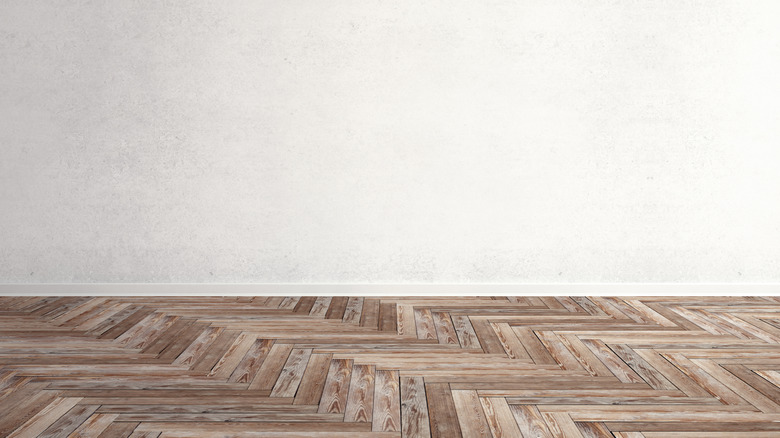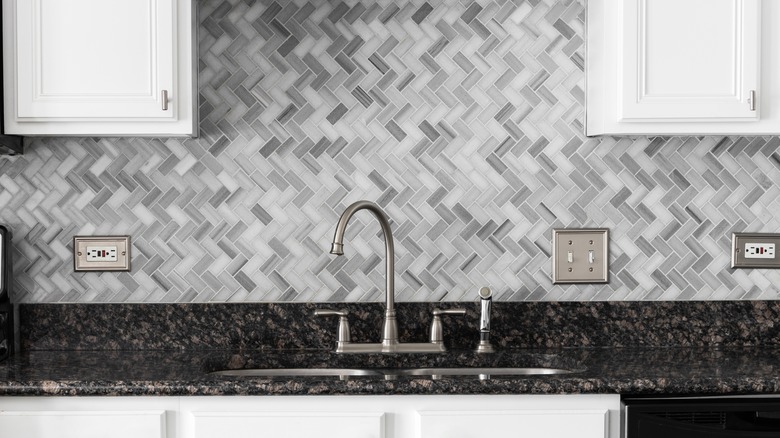Herringbone Design Is Back With A Twist (& How To Make The Trend Work For Your Home)
Seen often on walls, floors, and furniture, herringbone is one pattern that continually remains fresh and dynamic. It can be easily identified by its distinctive interlocking fishbone layout from which it takes its name. You've likely spotted it on the floors of gorgeous French apartments or the tilework of lush Italian villas. Known for its visual interest and abundance of texture, whatever the material, herringbone is particularly on trend in 2024, but with a twist, appearing in diagonal and vertical configurations in addition to the classic horizontal layout.
The Romans were among the first to use it widely for their street pavers since the placement of the blocks in an interlocked shape often made them sturdier and less likely to damage from the weight of carriage, horse, and foot traffic. By the 16th century, many European homes and public buildings used herringbone tile and wood floors as a go-to. Like the Roman street pavers, the durability and woven design meant less wear and damage over the years than simple straight plank flooring.
A new twist on herringbone orientation
Today, you can find this popular pattern everywhere and anywhere. Herringbone is often used to give spaces a European flare, including on wood floors, tilework, and furniture or counters. However, the typical horizontal layout popular in previous centuries has gotten a new orientation, with many homeowners and designers using the same design but flipped on its side or laid toward the diagonal in a given space. These new interpretations of herringbone go far beyond the expected upright "W" shape often found in older patterns, adding a fresh take and new possibilities.
A pattern praised for its sense of movement and texture, herringbone can be used strategically in design to provide the desired visual effects. These effects range from manipulating the size and feel of a space to adding a greater sense of layered texture when combined with other design elements. STUGA flooring's Marc Bacher tells Better Homes and Gardens, "Herringbone has a lot of movement that can be used to your advantage. You can visually lengthen a space by pointing the arrows of the pattern down the longest stretch of a room, or do the opposite to widen your space visually."
Achieving the herringbone look
If you love the look of herringbone, there are many ways to bring a dose of it into your home. On smaller pieces, herringbone adds visual interest and texture to things like table tops, dressers, cabinet doors, and kitchen counters. While many retail pieces already have a herringbone pattern in place, you can also add your own touch of DIY style using inexpensive wood planks to create a chic herringbone counter. Or add herringbone contact paper to the surface of a dresser.
Try laying out a backsplash of vertical herringbone on walls or in small spaces like a shower to generate a sense of wideness and expansiveness. You can also use it on a door to provide more texture, like this cool door DIY that uses herringbone to combat a boring hollow core door. On the floor, the pattern of herringbone can work to shrink a large space or expand a small one. Diagonally placed herringbone can be a great way to make a small entryway, mudroom, bathroom, or foyer feel larger and less boxy by laying your herringbone with the arrows radiating toward the corner of the room.


